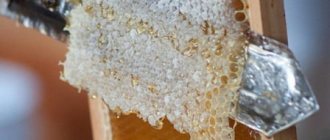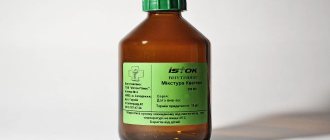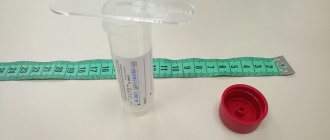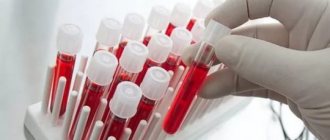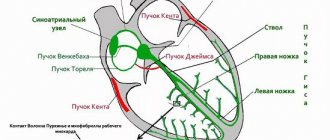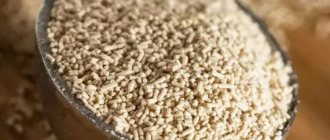Probiotics are preparations containing live bacteria . Microbial cultures are able to correct the intestinal flora, which has a positive effect on the immune system and, accordingly, human health. Due to poor nutrition, stress, and the use of antibiotics, the intestinal microflora can gradually lose most of the “correct” bacteria, and their place will inevitably be taken by pathogenic flora. Probiotics will help save the situation by maintaining the balance of normal flora.
Prebiotics are substances that provide food for beneficial intestinal flora. As a rule, prebiotics consist of complex carbohydrates that are not absorbed in the upper intestines, but are stored until they enter the large intestine, where beneficial microorganisms live.
Probiotics and prebiotics play an important role in human health.
Use of probiotics and prebiotics
Probiotics are used to eliminate dysbiosis and the consequences of a course of antibiotics, strengthen the immune system , restore the normal balance of flora in the intestines, during and after digestive disorders, in case of obesity or exhaustion - in all cases where there are problems caused by a lack of beneficial or an excess of harmful bacteria in the intestines.
As a rule, special preparations are used, but ordinary foods also contain probiotics: fermented milk products, especially yoghurts, and some vegetables (for example, cabbage and pickles). However, for treatment it is better to use special preparations containing various strains of live bifidobacteria and lactobacilli . When consuming kefir, yogurt and other probiotic-containing products, most beneficial bacteria die without reaching the desired part of the intestine, whereas in specially manufactured probiotics this problem is solved.
Prebiotics , as already mentioned, are used to stimulate the growth and maintenance of intestinal flora. The presence of prebiotics and probiotics in the body is necessary for its proper functioning.
The nutrient medium for microflora is food components: inulin, polysaccharides, lactulose. In order for the necessary substances to enter the large intestine, and not be completely digested in the upper intestines, it is necessary to consume raw fruits and vegetables, plant fiber, wholemeal bread with bran - in fact, those foods that we consider the mainstay of a healthy diet.
Prebiotics and probiotics - what's the difference?
16.09.2021
While both products have health benefits, the difference between prebiotics and probiotics mainly lies in their functions and where you can get them. The cells of our body are home to millions of microbes: this is the so-called microbiome. Many of them live in the digestive tract and are known as intestinal flora. These gut bacteria can be divided into two types: beneficial and harmful.
The latter can cause diarrhea , infections and intestinal . On the other hand, beneficial bacteria help control bad bacteria, stimulate the immune system , reduce gas, and improve digestion. The human body needs them to synthesize certain vitamins and absorb certain nutrients.
Therefore, if you want to enjoy good mood and health, you need to maintain a healthy and balanced intestinal flora. What role do prebiotics and probiotics play in this?
The main difference between prebiotics and probiotics
To keep your gut in good condition, you need to do two things:
- Give her probiotics to ensure that you are constantly getting live microorganisms into your body.
- Take prebiotics to provide food for the microbes that already inhabit your body.
These two lines are the main difference between prebiotics and probiotics. Prebiotics are “food” for intestinal flora. Prebiotics are non-digestible ingredients in foods that enter the colon. There they become food for intestinal bacteria, which have the necessary enzymes that break them down. By becoming food for intestinal bacteria, they stimulate their growth and activity, thereby improving the health of the host (people).
For a food ingredient to be considered a prebiotic, it must meet three conditions:
- Does not disintegrate and is not digested in the stomach and small intestine .
- It must ferment with the help of bacteria in the colon.
- This fermentation should promote the activity and proliferation of certain intestinal bacteria, having a beneficial effect on humans.
The most studied prebiotics are the various types of fiber in plant foods. Mainly fructooligosaccharides (FOS),
galactooligosaccharides (GOS) and inulin.
However, you can get gut flora benefits from many other foods:
- Some types of fiber found in onions, leeks, asparagus, artichokes, seeds (chia and flaxseeds), potatoes, carrots and apples are beneficial prebiotics.
- Polyphenols in cocoa, berries and spices.
- Fats in olive oil, nuts and fatty fish.
What are probiotics?
You already know more about prebiotics, so we'll focus on probiotics to fully understand the difference between them. The term "probiotic" means "for life." The most widely accepted definition of probiotics has been formulated by the World Health Organization (WHO) and the Food and Agriculture Organization of the United Nations (FAO). According to these organizations, probiotics: “Live microorganisms, taken in the right quantity, are beneficial to their host.” It is not about providing food for the bacteria in our body, but about accepting the bacteria. Most probiotics are produced by fermenting food. The most studied such examples are the bacteria Lactobacillus and Bifidobacterium. You can get probiotics through food or supplements.
Staple foods are sources of probiotics.
Whole yogurt is the most popular and accessible food rich in probiotics. You can also find this bacteria in other foods and supplements. It can be said that one of the most accessible foods rich in probiotics is yogurt. Kefir is also an example of a food that contains a large number of different types of beneficial bacteria. Another source of probiotics are fermented vegetables such as sauerkraut and pickles. Miso (fermented soybean paste) and tempeh (fermented soybean) are used in Asian cuisine. Finally, we can’t help but mention kombucha, a lightly carbonated drink that has become very popular in recent years.
Recent Notes on the Difference Between Prebiotics and Probiotics
The best way to summarize the difference between prebiotics and probiotics is to emphasize that the two products have different but complementary effects. Therefore, you won't be helping your body if you just take probiotics and don't get prebiotics. We encourage you to keep an eye on this topic because science is constantly making new discoveries in the field of prebiotics and probiotics, and you may learn new useful things about them.
Published in Gastroentorology Premium Clinic
Side effects
Probiotics contain bacteria that would normally already be present in the body. However, some problems can arise if probiotics are taken in the hope of quickly getting rid of unpleasant symptoms that accumulate over a long period of time. Chronic diseases, immunodeficiency, hormonal disorders, long-term treatment with antibiotics can create a situation in the body where probiotics will not have a very noticeable effect. In this case, step-by-step therapy should be carried out, including various measures to eliminate symptoms and restore the microflora.
Prebiotics should be used with caution for certain gastrointestinal diseases. Prebiotics can also cause enzymatic disorders in the intestines and an osmotic effect in the liver. Abuse of food containing prebiotics may result in diarrhea, flatulence, and intestinal colic.
Benefit
Probiotics can effectively eliminate dysbiosis , help prevent the occurrence of intestinal infections and eliminate their consequences, increase immunity and make it possible for newborns, including premature babies and those suffering from lactose intolerance, to acquire their own resistance. Probiotics are also used to prevent recurrences of bacterial and fungal infections.
Prebiotics contain substances that feed beneficial flora; they are not suitable for pathogenic flora. With the help of prebiotics, you can effectively maintain the state of intestinal microflora .
How to choose a probiotic and prebiotic
Probiotics. It is important to pay attention to:
- best before date;
- the presence of living strains of bacteria;
- mandatory presence of lacto- and bifidobacteria ;
- a combination of several strains of beneficial microorganisms.
There is ongoing debate about the best form to take probiotics: liquid or dry powder capsules. The thing against dry matter is that probiotics undergo additional processing, which reduces the viability of bacteria.
Prebiotics , according to experts, include carbohydrates that:
- cause active growth of beneficial intestinal bacteria, selectively fermented by colon microflora;
- are not absorbed in the upper parts of the digestive system;
- have the ability to influence the balance of intestinal microflora in the direction of increasing the number of beneficial microorganisms.
Dietary supplements: probiotics or prebiotics?
Our intestines are the largest organ of the immune system. The need for its coordinated and full-fledged work is difficult to overestimate. The main functions performed by various parts of the intestine are: digestion of food, absorption of micro and macroelements, nutrients. Also in the intestines live populations of microorganisms necessary to maintain biochemical, metabolic and immune balance. A healthy balance of all microorganisms is called normal flora, and those located precisely in the intestines are the microbiota of orgasm.
Microflora
The intestinal microflora consists of:
- The obligate part, which is the main microflora.
- Facultative, that is, additional, it includes opportunistic microorganisms (those that, if the balance is disrupted, can cause harm rather than benefit).
- The transient part is microorganisms that accidentally entered from the outside.
Let's dwell on the most important part, which includes bifidobacteria - they populate the intestines throughout its entire length, and are also present in the vaginal microflora. They took on a number of very important functions:
- The complex of interactions between bifidobacteria and the intestinal mucosa prevents toxins and pathogenic microorganisms from penetrating beyond the intestines into the body.
- Suppress the activity and growth of pathogenic microorganisms due to the production of organic fatty acids.
- They help to utilize leftover food and stimulate the process of parietal digestion.
- They synthesize a number of biologically active substances (amino acids, proteins, B vitamins including folic acid, nicotinic acid, pyridoxine).
- Enhances the absorption of calcium, iron and vitamin D.
Also, the obligate microflora includes lactobacilli, which play a very important protective role, and they protect the body from pathogens of acute intestinal infections entering the body. Without lactobacilli, a full balance with facultative microflora is impossible, since it inhibits the growth of a number of opportunistic bacteria. The protective function is carried out due to the production of lactic acid, hydrogen peroxide, lysozyme and other substances with antimicrobial activity during metabolism. Propionic bacteria also have this activity.
The next representative is E. coli, which helps digest lactose, synthesize vitamins: K, group B, and also produce antibiotic-like substances that prevent pathogenic bacteria from growing. A very important function is to stimulate the formation of antibodies.
Peptostreptococci are necessary to maintain a pH no higher than 5.5. The last but not least important representatives are enterococci, which are necessary for the fermentation of carbohydrates with the formation of lactic acid, and are in balance with E. coli.
Reasons for violations
This balance is quite easily destroyed by both external and internal factors.
In newborns this is:
- Vaginosis of the mother's vagina, mastitis.
- Late breastfeeding.
- Low Apgar score and resuscitation.
- A long stay within the walls of a hospital encourages the colonization of aggressive species of bacteria.
- Intestinal immaturity
- Purulent infections
- Lactose intolerance
- Immunodeficiency
- Malabsorption syndrome
Infancy and childhood:
- Early artificial feeding.
- Impaired intestinal motility.
- Frequent acute respiratory infections.
- Rickets, anemia.
- Mental development disorder.
- Atopic dermatitis
Preschool, adolescence:
- Closed groups.
- Allergy.
- Adverse habits (smoking, drug addiction, alcoholism).
- Frequent acute respiratory infections.
Middle age means occupational hazards, and in old age it means a change in the composition of the microflora. There are also objective factors independent of age:
- Frequent and severe stress.
- Gastrointestinal diseases.
- Taking certain hormonal medications.
- Undergoing radiation therapy or chemotherapy.
- Food poisoning.
- Malnutrition (dietary regime, composition and quality of food consumed).
- Failure of the immune system (immunodeficiency).
- Use of antibacterial therapy.
What you should pay close attention to and, if necessary, consult a doctor and understand that microbiota disturbances have arisen:
- belching
- rumbling in the stomach in the intestinal area
- Constantly feeling bloated
- abdominal pain, dull aching
- disturbance of stool consistency and regularity
- sour stool odor
- seizures, dry skin
- eating disorder (usually lack of appetite)
- the presence of an unpleasant taste in the mouth, as well as putrefactive or sour breath
- There is also nausea and vomiting
- due to asthenia and hypovitaminosis, fatigue and drowsiness
You should not try to diagnose yourself and self-medicate.
Nutrition
Prevention is a well-functioning balanced diet and the obligatory presence in it of products containing probiotic cultures (kefir, cottage cheese, sour cream, curdled milk, yogurt). The diet should also be rich in fiber. The use of probiotics and synbiotics in parallel with the use of antibacterial drugs.
Prevention is a well-functioning balanced diet
Drugs
It is worth considering in more detail what options currently exist for correcting the state of dysbiosis with the help of medications and dietary supplements. The following groups are distinguished:
Probiotics are directly bacteria and microorganisms. When taken, they act as a so-called “cover” for the intestinal microflora, creating favorable conditions for its growth and preventing opportunistic microorganisms from developing. For treatment they use: bifidobacteria, lactobacilli, E. coli, enterococci, streptococci, propionibacteria, fungi). Duration of treatment is at least 1 month.
In composition they are:
- Monocomponent, they contain only one type of microorganisms (Colibacterin, Bifidumbacterin, Lactobacterin, Probifor, Narine)
- Multicomponent ones contain several types (Acelact, Acipol, Linex, Bifiform, Normospectrum, Rioflora, Probifid, Bak-set)
- sorbed can also contain one or more types of bacteria that will be fixed on the sorbent
- combined, they additionally contain lysozyme or a nutrient medium (Bifidumbacterin Forte, Probifor, Ecoflor, Normobakt, Bion-3, Baktisuptil, Biosporin, Sporobacterin)
- metabolic
Prebiotics are nutrient substances for the intestinal microflora that are not absorbed: Inulin, Lactose, Lactulose. (Dufalak, Zakofalk, Liquid coal, Normasorb, Laktofiltrum).
Complex preparations in this group include all types of bacteriophages.
Synbiotics - a complex preparation containing probiotics and prebiotics (Maxilac, Laktobalans, Primadophilus)
Metabiotics - metabolites of intestinal microflora (Hilak forte, Baktistatin, Actoflor-S)
Literature:
Clinical protocol for the treatment of intestinal dysbiosis 2003
“Experimental and clinical gastroenterology” Article Intestinal dysbiosis: current state of the problem, comprehensive diagnosis and therapeutic diagnosis and treatment. 2015


